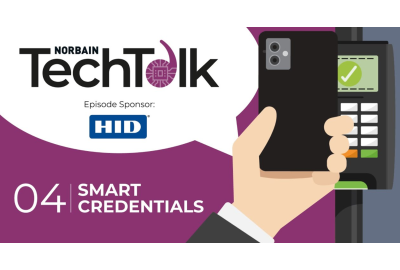Opening doors with smart devices
Video transcript:!
It’s a given that smart technology is transforming the way we live and work,
and there are few areas of daily life that haven’t been
impacted by so-called ‘smart’ mobile devices, such as phones and watches.
Access Control is no different, and the popularity of Smart Credentials,
or Wearable technology is on the increase.
Why? Well one key reason is that these devices remove the need to issue physical access cards,
tokens, or fobs to users. Instead, they simply download an app or token onto
their smart device which is programmed with the appropriate access requirements.
Not only can these access rights be changed by the authorised administrator at any time,
but it also immediately reduces the risk of compromised security
as users are less likely to lose or forget their smart devices.
Security is further enhanced as the technology can be highly encrypted and randomised.
It also provides a truly contactless access control solution for employees and visitors
alike and so helps reduce the spread of germs and viruses in high-touch areas.
And there are environmental advantages as well – no cards, tokens or fobs means a
reduced reliance on single-use plastics – reducing pollution whilst also saving the customer money.
Visitor Management can be streamlined, with guests being emailed an app or token granting them
temporary access. This can be single usage, time controlled, or revoked when no longer required.
Customers can benefit from enhanced people management – either in the moment
for controlling density in an area, or through the advanced reporting functionality available,
which allows them to understand the flow of occupants, bottlenecks, and building requirements.
It’s not all about the end customer though – there are some great benefits for installers as well.
Because smart credential access control solutions normally work through a cloud-hosted platform,
ongoing maintenance can be done remotely,
with the ability to set alerts to quickly notify you of any issues.
The requirements of each end customer will differ and there’s a real opportunity for
security specialists to add value to their clients by assessing the different risks and threats
in their environment and working with them to develop the most appropriate solutions.
For example, in high-risk environments – such as data storage areas or government buildings – a
combination of smart credentials and biometric recognition can be used,
providing a superior level of certainty.
At the other end of the spectrum in low-risk areas – such as the stationery cupboard – PIN
codes may suffice. Many businesses benefit from a hybrid solution that is tailored to their needs
and these are often in place during a transition to a system using smart device technology.
For the security installer, it’s clear that this area of physical security is developing rapidly,
and specialists can assist their customers greatly by understanding the benefits
as well as how to assess the levels of risk.
Norbain can advise you on the most suitable Smart Credential Access Control Solutions
for you and your customers’ needs. To find out more, why not head to norbain.com or speak with
your account manager.
